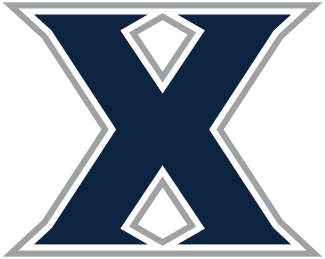THE NEW KIDS ON THE BLOCK
Florida was a no-brainer acceptance to the new league. Due to Big 12 policies, the conference was only going to accept two more affiliate members, thus evening out membership among full-time members. This is a departure from wrestling, in which five full-time members sponsor the sport and nine schools are affiliate members.
On the other side of the country, two programs faced a perilous, but not unfamiliar territory: UC Davis and San Diego State. The duo was in the old Mountain Pacific Sports Federation before most members left to go the new Pac-12 or Big East. After Fresno State shut its program down, the Aggies and Aztecs were left as the lone independents in women’s lacrosse.
Then came the Pac-12’s call in 2022: join us. An eight-team league of western teams back together, and all was well — until this summer.
With USC and UCLA already planning their move to the Big Ten, broadcasting rights negotiations broke down between the Pac-12 and potential outlets.
First, Colorado bolted the Pac-12 in July. Then it was the Arizona schools and Utah in August, all to the Big 12. That was followed by Washington and Oregon to the Big Ten, and by September when Cal and Stanford announced their ACC move, before a single Pac-12 lacrosse game could be played with the new entrants, the league was to be finished in 2024.
“We worked so hard to get into the Pac-12,” UC Davis coach Suzanne Isidor said. “And so excited to be part of this amazing conference with amazing history and lacrosse, only for it to blow up. For us, it was really sad and disappointing.”
When the Big 12 announced its plans in November, UC Davis didn’t waste any time. Isidor and the UCD administration got to work by submitting their proposal to enter the Big 12.
And then the Aggies waited. And then they celebrated. So did San Diego State.
“A huge relief,” Isidor said. “It was awesome. I am so proud of [the athletes] handling everything. To hand them all that good news was really fun.”
Isidor said that her program was going to be fine regardless of conference affiliation — after all, it’s done it before — and the athletic department is committed to the sport. Nevertheless, despite the fracturing of the West Coast’s core conference, all the teams have a place to play.
“It is crazy that we’re divided,” Isidor said. “I do think it’s great we didn’t just find homes; we found big-time homes. Hopefully, this sport continues to grow out from here. The West Coast teams are thriving and are going to be playing great competition all over the country. It’s great exposure for us.”
THE DETAILS
The inaugural Big 12 season will feature a five-game round-robin schedule, which means that teams will have two or three regular-season road trips per year. The inaugural Big 12 tournament will be hosted by Colorado and award an automatic qualifier to the 2025 NCAA tournament. According to Scherf, the fact that Colorado volunteered sped the process along.
“Personally, I get very excited about announcements like this, new sports in particular,” Scherf said. “Just seeing how excited [the coaches and players] are, it gives me a reminder of why we do what we do.”
The Big 12’s commitment to lacrosse will also be shown with person power. Scherf noted that the league is planning to hire another person to administer the sport, among others.
The three affiliate members are signed on for four seasons through 2028. Each of those members pay into the league to cover administration and championship costs, and the teams are responsible for their own travel.
Finally, the Big 12 is working through its broadcasting logistics for women’s lacrosse. In July, the Big 12 signed a rights extension for its schools through 2030-31. Many of the Big 12’s Olympic sports stream their games on Big 12 Now via ESPN+.



























































